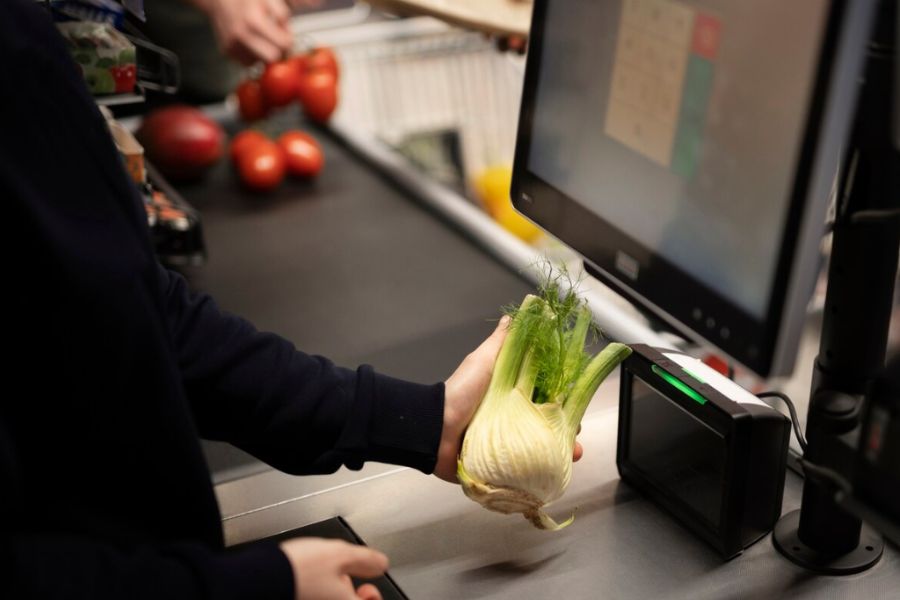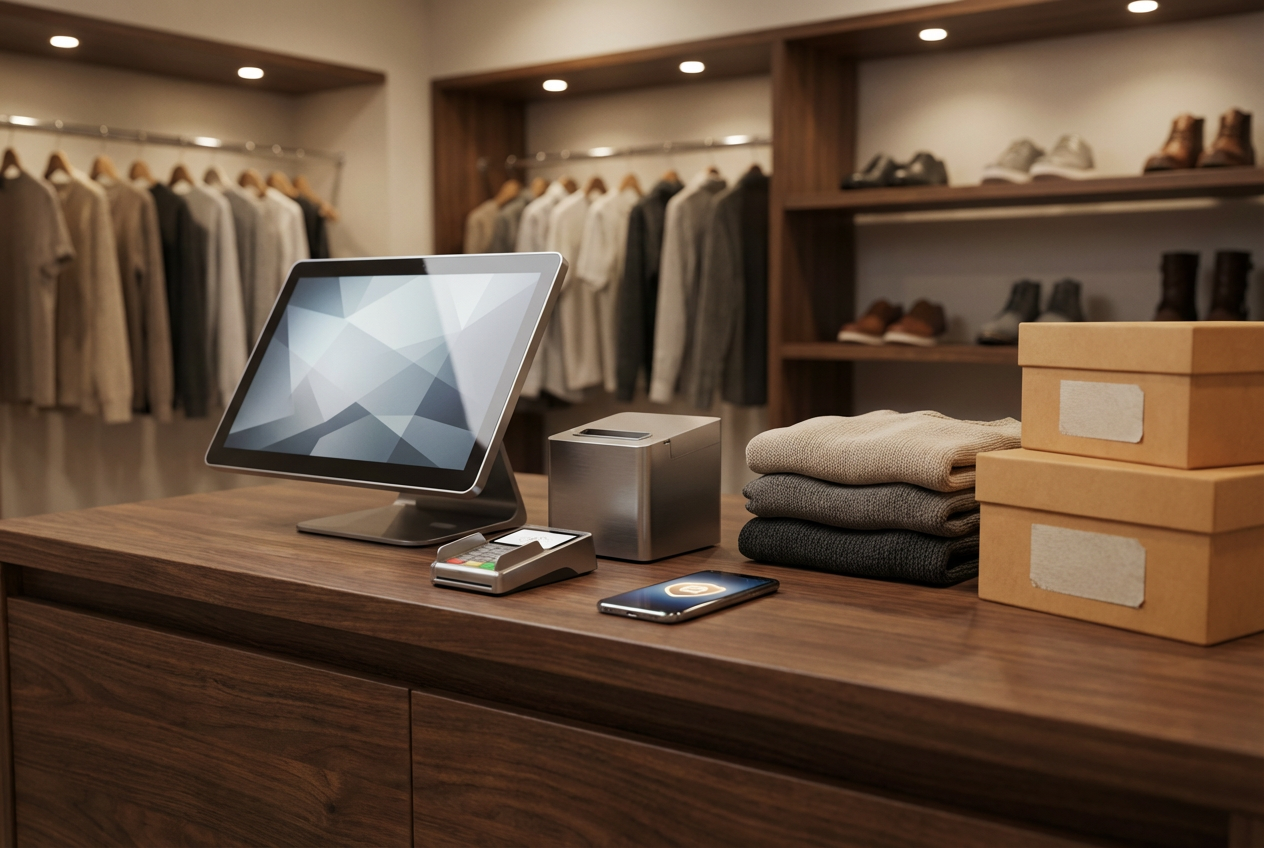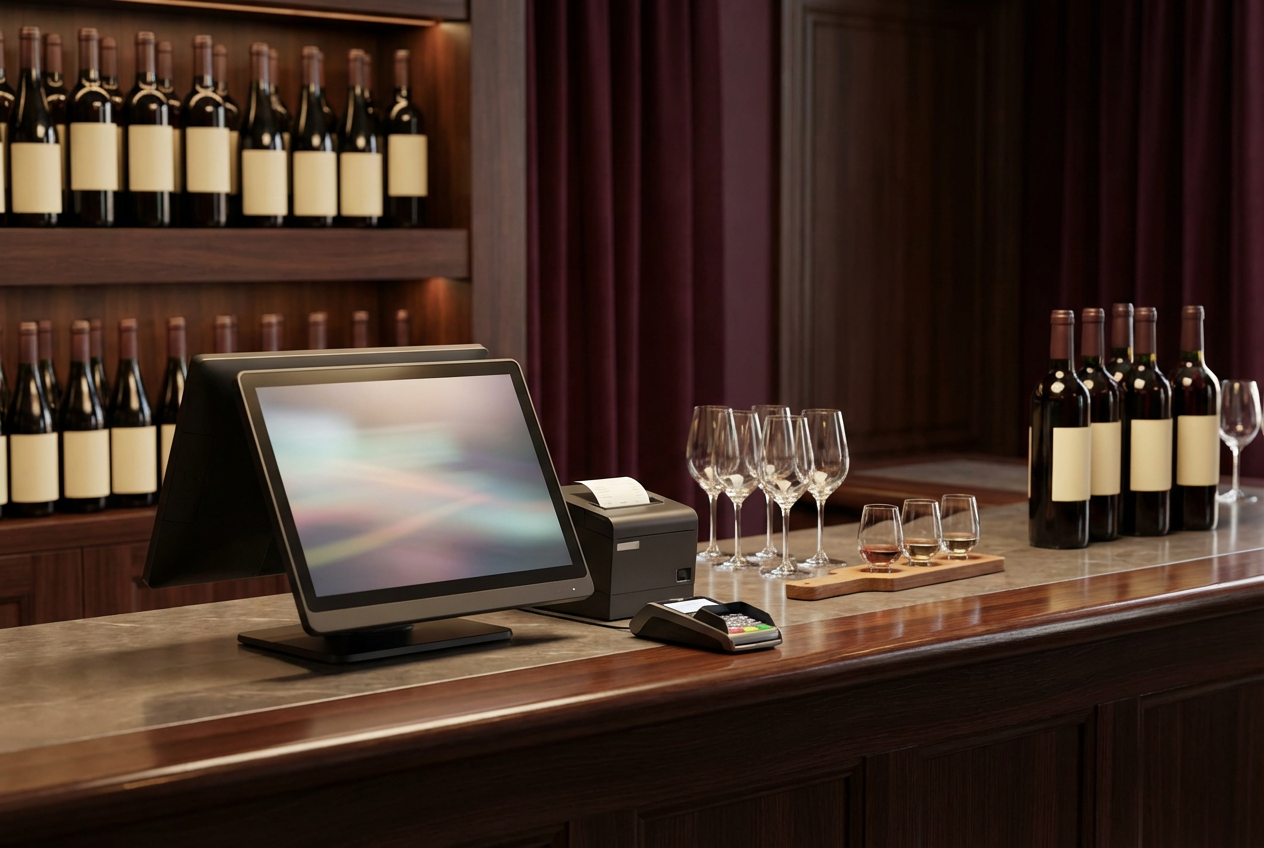We understand that with the unstable market, managing a grocery store in Thailand is tougher than ever. Shoppers expect quick checkouts, easy payments, and accurate stock info at their fingertips. Choosing the best POS system for grocery store Thailand can make or break your business. It saves time, money, and headaches. In this guide, we’ll break down what matters most when selecting a POS that aligns with the way Thai grocery stores actually operate.
Highlights:
- With rising competition and the need to juggle in-store, online, and delivery operations, Thai grocery stores can no longer afford to run without a smart, connected POS system.
- To pick the right POS, grocery owners should set a clear budget, list must-have features, check local fit, and always test the system before committing.
POS Trends and Demands in the Thailand Grocery Market
Grocery retail in Thailand moves fast. Today’s shoppers want convenience, speed, and flexibility at the checkout line. Self-checkouts are popping up in supermarkets across Bangkok, Chiang Mai, and Phuket, speeding up lines and boosting customer satisfaction. And with PromptPay and Thai QR codes becoming standard, any POS system in Thailand needs seamless support for these local payment options.
The COVID-19 pandemic pushed Thai customers to prefer contactless and digital payments, driving up demand for POS systems with robust digital wallets and QR payment integration. As of May 2023, Statista reports that TrueMoney Wallet held nearly 53% of Thailand’s mobile wallet market share, followed by Rabbit LINE Pay at around 25%. This underscores the need for POS systems to support these widely used local e-wallets.
Grocers who tap into these trends see impressive results. Departure Thailand, for example, upgraded their checkout system and saw a 20% jump in customer satisfaction, paired with a solid 15% increase in sales conversion.
Why Thai Grocery Stores Can’t Afford the Wrong POS
Picking the wrong POS system isn’t just a tech headache. It’s bad for business. Grocery stores run on tight margins and fast-moving inventory. A poorly managed system slows down checkouts, frustrates customers, and leads to inefficient inventory management. If your system can’t sync instantly across channels, you’ll lose sales, waste inventory, and risk upsetting loyal shoppers.
Imagine running out of your best-selling snacks during a peak sales hour because your POS didn’t update stock levels in real-time. Or customers abandoning their carts because the checkout line takes too long. It happens more often than you think. And most won’t give you a second chance.
Choosing the best POS for grocery store Thailand means more than smooth checkouts. It’s about keeping your shelves stocked, your customers happy, and your profits healthy.
Steps to Choose the Best POS System for Grocery Store in Thailand
Set Your Budget and Watch for Hidden Costs
Cost is a big deal, especially for grocery businesses running on slim margins. When looking for the best POS for grocery store Thailand, start by figuring out how much you can spend each month. Most Thai retailers pay around 1,500–3,000 THB per month for decent systems, but it is always advisable to double-check for hidden costs. Features like offline mode, multi-store setups, or custom integrations can quickly push up the price.
Watch out for setup fees, extra hardware costs, and charges for software updates. A good rule of thumb is to ask providers directly: “What exactly am I paying for?” That way, no nasty surprises pop up down the line.
Pick the Must-Have Features for Thai Grocery Stores
Every store is different, but some features are ‘non-negotiable’ in Thailand’s grocery market:
►►► Optimal solution set for businesses: Multi store POS, Next-gen POS, Inventory Management Software (MSI), Self Service, Automation, Backorders
- Real-time stock tracking: Running low on inventory can cost you customers. A solid POS must instantly update stock across all sales channels.
- Local payment integrations: Thai customers love PromptPay and QR code payments. Your POS should easily handle these local favorites.
- Easy VAT and e-invoicing: Thailand’s tax rules are strict. Automated VAT calculation and compliant e-invoices save serious headaches.
- Self-checkout support: Especially in busy city stores, self-service kiosks can cut wait times and boost customer satisfaction.
Don’t settle for a system that misses these key features. Without them, you’ll lose customers and profits to competitors who can deliver the convenience shoppers expect.
Make Sure It Fits Your Current Setup
Changing your entire hardware setup is expensive and stressful. Check if the new POS integrates smoothly with your current scanners, scales, cash drawers, and tablets. The best systems work seamlessly with Android tablets and standard retail hardware you might already own.
Global Vapors, a retailer with a huge product range, found switching to a flexible POS that integrated easily with their existing equipment cut checkout times by 50% and pushed sales up 25%.
Choose Something Your Staff Can Learn Fast
Your employees have plenty on their plates already. The best POS system for grocery store Thailand isn’t the most complicated. It’s the easiest one your team can adopt quickly. Pick software with a clean, intuitive interface, and minimal training needs.
When Yeti Cycles upgraded their system, checkout transactions sped up by a full minute per customer. Their staff learned the system within days, proving how simplicity makes a real difference on the sales floor.
Focus on Reports That Actually Help You Sell More
A good POS doesn’t just handle transactions. It helps you understand your business. Look for built-in analytics that break down sales by product, category, and store location. Clear reports help you spot top-selling items, slow-moving stock, and buying patterns unique to Thai consumers.
JAT Clothing switched to a system with better reporting and saw a 30% jump in sales. Clear, accurate data meant smarter restocking decisions and fewer lost sales.
Think Ahead: Will It Grow With You?
Today’s single-store setup could become tomorrow’s multi-branch operation. Before you sign on the dotted line, confirm your POS can scale. Does it handle multiple stores smoothly? Can it sync inventory and promotions across locations instantly?
Smoke Arsenal, a Canadian wholesaler, faced massive growth but struggled with outdated tech. When they switched to a scalable system, their customer satisfaction jumped 20%, and sales rose by 15%.
Choose a Provider With Real Support in Thailand
Tech troubles happen. But when your POS goes down, you need fast, reliable support, preferably from a local team that understands Thai retail. Check that your provider has Thai-speaking support staff and fast response times.
Nothing’s worse than facing a system crash during busy hours without quick help. Thai grocery retailers, in particular, benefit greatly from locally available support teams who can sort out issues on the spot.
Try Before You Buy
Finally, never skip the test drive. Ask your chosen provider for a demo or trial run in your store. This hands-on test ensures the system meets your needs in real-world conditions.
Why ConnectPOS is a Top Pick for Grocery Stores in Thailand
Grocery stores in Thailand deal with fast-moving inventory, complex product variants, and tight margins. Many also face issues like long checkout lines, outdated stock reports, and limited payment options for local shoppers. That’s where ConnectPOS fits in, offering a modern, Thai-ready solution that’s built for daily speed and long-term scalability.
Unlike generic POS software, ConnectPOS is already tuned for how grocery stores work in Thailand. From VAT compliance to scale integration, every detail is covered.
Here’s what makes it stand out:
- Built for Thai Retail Operations: Supports Thai VAT and e-invoicing: automatically calculates taxes, supports printed and digital receipts with Thai formats; customizable receipt templates: add Thai-language messages, QR payment codes, or promotion banners; PromptPay and Thai QR code-ready: supports local payment preferences out of the box.
- Fast, Flexible Checkout Options: Self-checkout support: reduce queue time during peak hours with kiosk-friendly checkout; barcode + weighing scale integration: scan or weigh fresh items instantly; offline mode: sell even when your internet drops, data syncs back when you reconnect.
- Smooth Inventory Management: Real-time stock tracking across all branches; low-stock alerts and expiry notifications to prevent waste; multi-store control: manage pricing, products, and promotions centrally if you run more than one location.
- Easy to Use, Even for New Staff: Intuitive interface: simple drag, tap, and scan workflow; Thai/English language toggle: suitable for local and international staff; mobile POS support: use a tablet, laptop, or desktop to check out customers anywhere in-store.
- Omnichannel-Ready: Syncs with online stores: sell in-store and online using the same system; real-time order updates: avoid overselling by syncing orders and inventory; integrates with ERP, accounting, and CRM POS tools for total business visibility.
- Trusted by Thai Retailers: In one case, Departure Thailand upgraded to ConnectPOS and reported 20% higher customer satisfaction, 15% boost in conversion rate, and 50% lower operating cost.
- Local Support You Can Count On: Thai-speaking support team; fast onboarding and dedicated success manager; regular updates to meet Thai regulations and retail trends.
If you’re running a grocery store POS in Thailand, you need a POS that does more than just ring up items. You need one that keeps up with your pace, customers, and plans to grow. ConnectPOS gets it and delivers.
FAQs: Best POS System for Grocery Stores in Thailand
1. What’s the average cost of a grocery POS system in Thailand?
Monthly plans start around 1,500–3,000 THB. But be careful. Some features like offline mode or multiple store support may cost extra.
2. Can these POS systems handle Thai VAT and e-tax invoices?
Yes, the better ones do. Look for systems like ConnectPOS that support Thai VAT rates, digital receipts, and local tax reporting out of the box.
3. Do I need to buy new hardware?
Not always. Many modern POS systems work with your existing barcode scanners, receipt printers, and even Android tablets. Always double-check compatibility before you commit.
4. What payment methods should my POS support in Thailand?
You’ll need more than just card readers. Make sure your POS accepts PromptPay, Thai QR codes, and wallets like TrueMoney and Rabbit Line Pay.
5. How do I know if a POS is right for a multi-branch setup?
Look for real-time inventory syncing and central control over pricing and promotions. A solid POS should help you manage all branches from one place without extra headaches.
Final Thoughts
Grocery stores in Thailand don’t have time or money to waste on the wrong tech. The best POS system for grocery store Thailand should do more than just scan barcodes. It should help you move stock faster, shorten checkout lines, and keep Thai customers coming back.
If you’re still weighing your options, look at what’s already working. ConnectPOS helped Departure Thailand cut service costs by half and lift conversions by 15%. That’s not luck. That’s what happens when your system speaks your language, literally and operationally.
So, if you’re serious about growing your grocery business in Thailand, it might be time to stop guessing and start upgrading. Contact us to see how ConnectPOS can help you sell smarter, faster, and better.
►►► Optimal solution set for businesses: Shopify POS, Magento POS, BigCommerce POS, WooCommerce POS, NetSuite POS, E-Commerce POS



